Pupusas with Curtido & Tomato Salsa, El Salvador’s #1 Food
- April 2024
- By Estela Medrano Benitez
- Recipe from El Salvador
-
- (1)
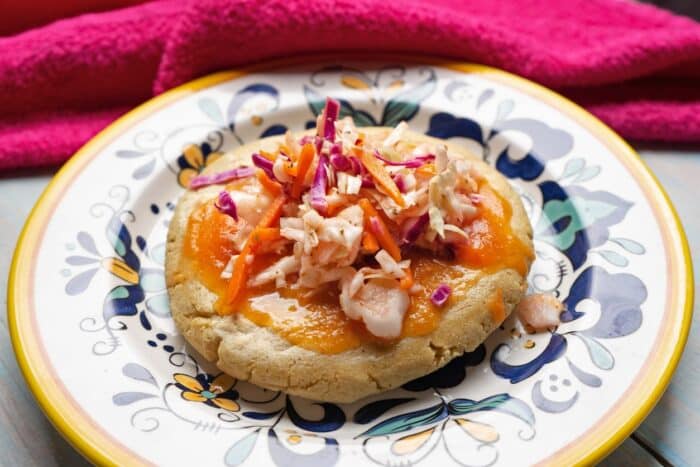
Pupusas are the nationally famous dish of El Salvador, enjoyed any time of day and stuffed with a delicioso range of savory fillings. Sold almost everywhere they go back home, Salvadoreans love pupusas so much they’ve even designated a national holiday for the masa harina-stuffed treat. The Central American nation celebrates National Pupusa Day on the second Sunday of November every year.
Because we love pupusas here at Familia Kitchen, we asked one of our favorite Salvadorean homecooks, Estela Medrano Benitez (check out her delicioso pollo en pinol, made for special occasions and Salvadorean holidays), to show us how to make her favorite pupusa. Below is her recipe for cheese pupusas or pupusas de queso, which we plan to make regularly and especially every second Sunday in November.
Estela explains that she always fills her pupusas with cheese because they are her family’s absolute favorite. Other popular pupusa stuffings include:
• cheese and beans,
• cheese and chicharron (pork rinds),
• cheese and loroco (a native Central American climbing vine with edible flowers. Loroco tastes something like artichoke or asparagus),
• cheese and chicken
But First a Word on What Pupusas are Not
Pupusas are often confused with other popular Latino ground corn flour stuffed-masa street foods. Here’s a quick overview of the other dishes that pupusas are sometimes mistaken for — and how they are different.
Pupusas are sometimes confused with:
• Arepas, which are nationally beloved in both Venezuela and Colombia. But the type of corn flour (precooked cornmeal vs. masa harina) is different and arepas are not stuffed before cooking.
See how to make arepas here.
• Gorditas, and we have to admit they look very similar. Both are made with masa harina. But ”the difference between a gordita and pupusa is how you cook them,” explains Vivi Abeja, one of our favorite Familia Kitchen Mexican cooks. ”With pupusas, you put the filling in the raw masa, and both masa and filling are cooked together on the hot comal. With gorditas, first you cook the raw masa with no filling, and once it’s toasted and nice and golden, you slice it open, and add whatever filling you want. Then, you cook the gordita again to heat the filing.”
See how to make cheese and bean gorditas here.
• Tortillas, because both are made with masa harina. But a pupusa is fluffier, thicker and stuffed. Corn tortillas are not filled with anything, of course.
See how to make Mexican corn tortillas here and how to make Panamanian corn tortillas here.
• Empanadas. Both are stuffed with traditional Latino ingredients, and both are regularly sold by street vendors in their home countries. But empanadas are made with wheat flour, not corn, and are usually fried or baked, not cooked on a griddle, stoptop pan, or comal.
See how to make empanadas here.
Want to go deeper into the differences between Latin America’s favorite corn and wheat stuffed foods? We write all about it in this Familia Kitchen essential guide: “How are Arepas, Pupusas and Empanadas Different?“
And now, back to pupusas. Read on for how to make and cook this delicioso Salvadorean staple.

How to Make Pupusas, Salvadoreans’ Go-to Snack
The main ingredient in pupusas is masa harina, a type of dried and finely ground field corn flour that has gone through a process called nixtamalization. (The leading masa harina brand is Maseca, easily found in most — we want to say all — grocery stores in the U.S.) Mix the masa harina with water and shape the resulting masa dough into 2”-size small balls, each slightly cupped so that it can hold the filling. Add your choice of stuffing and then fold the masa around it to seal the filling inside. The last step to form and cook your pupusa is to use your hands to flatten the masa ball into a thin disc, brush it with vegetable or olive oil, and brown it on both sides on a griddle or comal that’s bien calientito.
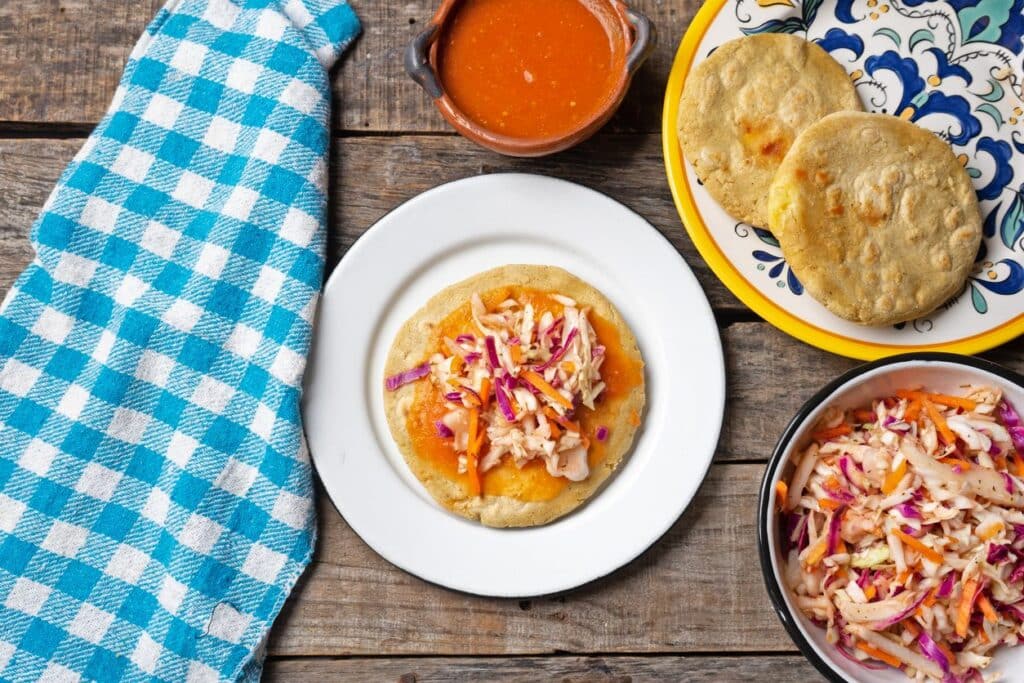
The Pupusa’s Best Pals: Curtido and Tomato Salsa
Now, let’s talk about the pupusa’s eternal sidekicks: Curtido and tomato salsa.
Curtido is a coleslaw-like, slightly fermented mix of shredded cabbage, carrots, chopped onion and vinegar. Tart, crunchy and juicy, curtido is absolutely essential when taking the first bite of any pupusa. Salvadorean curtido is not complete without a spoonful or two of the nation’s beloved tomato salsa. Blend tomatoes, garlic, onion and a hint of chile and simmer on the stove for about 10 minutes. Drizzle the salsita de tomate on top of the cabbage, carrot and red onion mixture for a tasty hit of acid and sweet to complement the cheesy richness of every pupusa.
Estela hopes you love her pupusas de queso as much as her family does. Funnily enough, she tells Familia Kitchen she only started making pupusas after she moved to the States. Pupusas are so popular and found literally almost everywhere back in El Salvador, she never had to make them herself.

But now that they live in Maryland, her husband and son beg her to make pupusas all the time, and she gives in about once a month, she says. Why not more often? ”Es que engordan,” Estela smiles. Pupusas are not especially waist-friendly. So she saves them for a special treat every so often.
On the lucky days when she announces she’s making pupusas, everyone comes running into the kitchen to scoop a hot one off the griddle and eat it with curtido and salsa, she reports. Pupusas are the taste of El Salvador, no matter where she and her family live, says Estela.
Ready to Make Estela’s Traditional Pupusas de Queso?
MoreLike This


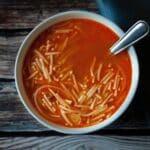
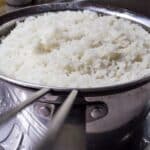
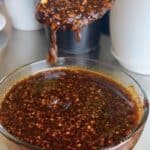
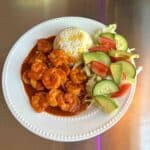
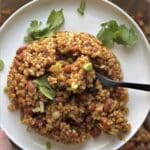

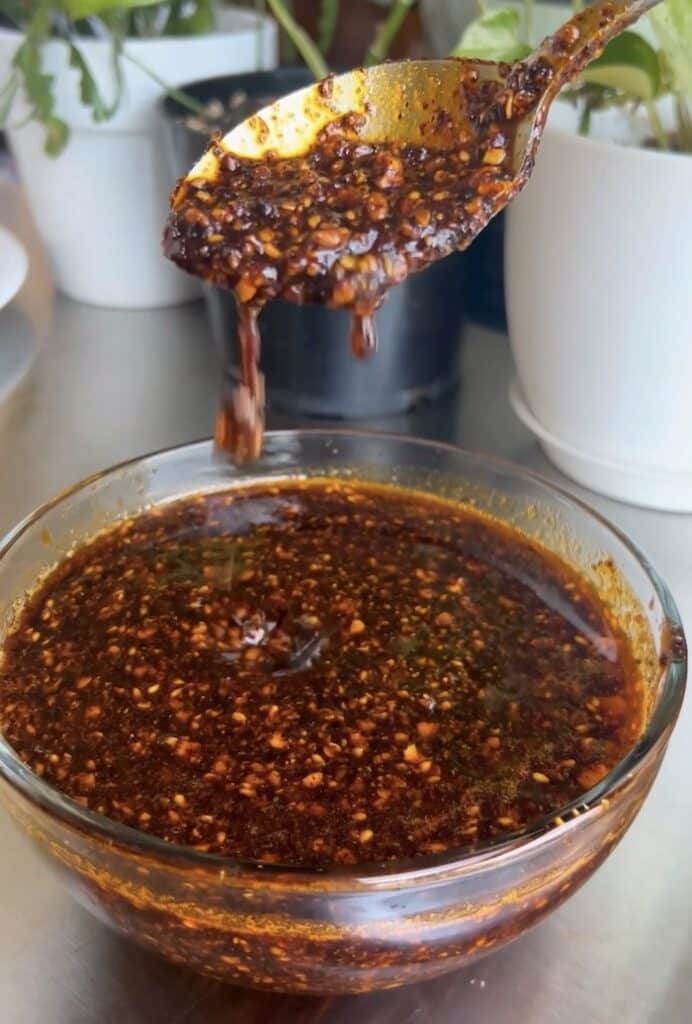
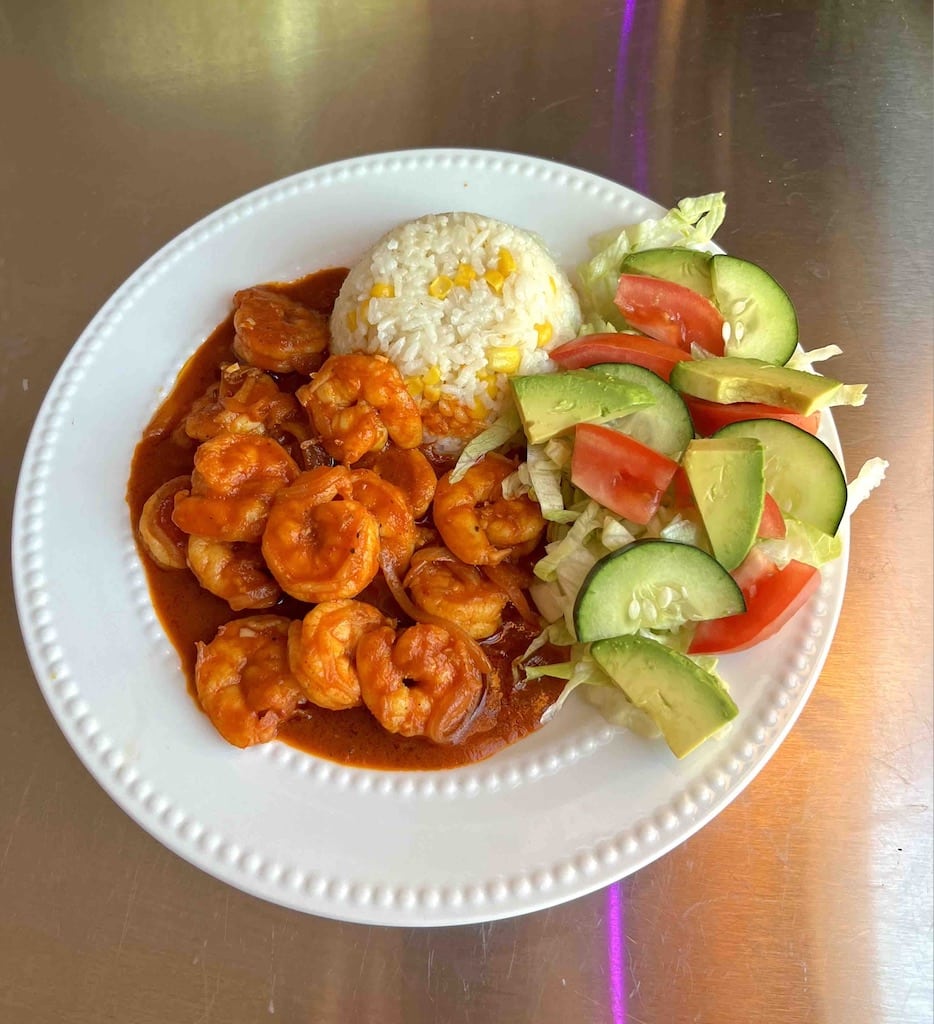

Got a question or suggestion?
Please rate this recipe and leave any tips, substitutions, or Qs you have!